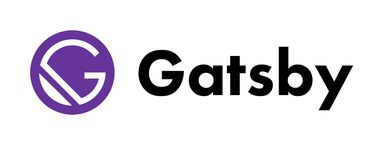Kick off your Gatsby + ButterCMS with this default boilerplate.
-
Create a Gatsby site.
Use the Gatsby CLI to create a new site, specifying the default starter.
# create a new Gatsby site using the default starter npx gatsby new my-default-starter https://github.com/butterCMS/gatsby-starter-buttercmsIf you run into an error with
npx, you may need to first removenode_modulesthen run:yarn upgrade --latest yarn install gatsby develop -
Create Content
For this template to work, you have to create your content on ButterCMS as stated here
-
Configuration You need to add the API token from your dashboard, along with associated page types, content fileds, and pages.
gatsby-config-js{ resolve: `gatsby-source-buttercms`, options: { authToken: `<API_TOKEN>`, // Optional array of Collection key contentFields: { keys: [`collection_key`], // Optional. Set to 1 to enable test mode for viewing draft content. test: 0, }, // Optional array of page type keys pageTypes: [`page_type_key`], // Optional array of locales (if configured in your account) locales: [`en`, `es`, `fr`] }, },
-
Start developing.
Navigate into your new site’s directory and start it up.
cd my-default-starter/ gatsby develop -
Open the source code and start editing!
Your site is now running at
http://localhost:8000!Note: You'll also see a second link:
http://localhost:8000/___graphql. This is a tool you can use to experiment with querying your data. Learn more about using this tool in the Gatsby tutorial.Open the
my-default-starterdirectory in your code editor of choice and editsrc/pages/index.js. Save your changes and the browser will update in real time!
A quick look at the top-level files and directories you'll see in a Gatsby project.
.
├── node_modules
├── src
├── gatsby-browser.js
├── gatsby-config.js
├── gatsby-node.js
├── gatsby-ssr.js
├── LICENSE
├── package-lock.json
├── package.json
└── README.md
-
/node_modules: This directory contains all of the modules of code that your project depends on (npm packages) are automatically installed. -
/src: This directory will contain all of the code related to what you will see on the front-end of your site (what you see in the browser) such as your site header or a page template.srcis a convention for “source code”. -
gatsby-browser.js: This file is where Gatsby expects to find any usage of the Gatsby browser APIs (if any). These allow customization/extension of default Gatsby settings affecting the browser. -
gatsby-config.js: This is the main configuration file for a Gatsby site. This is where you can specify information about your site (metadata) like the site title and description, which Gatsby plugins you’d like to include, etc. (Check out the config docs for more detail). -
gatsby-node.js: This file is where Gatsby expects to find any usage of the Gatsby Node APIs (if any). These allow customization/extension of default Gatsby settings affecting pieces of the site build process. -
gatsby-ssr.js: This file is where Gatsby expects to find any usage of the Gatsby server-side rendering APIs (if any). These allow customization of default Gatsby settings affecting server-side rendering. -
LICENSE: Gatsby is licensed under the MIT license. -
package-lock.json(Seepackage.jsonbelow, first). This is an automatically generated file based on the exact versions of your npm dependencies that were installed for your project. (You won’t change this file directly). -
package.json: A manifest file for Node.js projects, which includes things like metadata (the project’s name, author, etc). This manifest is how npm knows which packages to install for your project. -
README.md: A text file containing useful reference information about your project.
Looking for more guidance? Full documentation for Gatsby lives on the website. Here are some places to start:
-
For most developers, we recommend starting with our in-depth tutorial for creating a site with Gatsby. It starts with zero assumptions about your level of ability and walks through every step of the process.
-
To dive straight into code samples, head to our documentation. In particular, check out the Guides, API Reference, and Advanced Tutorials sections in the sidebar.
Deployment on Gatsby Cloud
- After signup in Gatsby cloud need to add env variable in Site setting. Add GATSBY_BUTTER_CMS_TOKEN in env
- for preview mode add GATSBY_BUTTER_PREVIEW_MODE in environment as true it will show preview mode or draft mode
- Configure webhooks in ButterCMS. Add this preview webhooks and Builds hooks in ButterCMS.
View our Gatsby Blog engine and Gatsby Full CMS for other examples of using ButterCMS with Gatsby.



